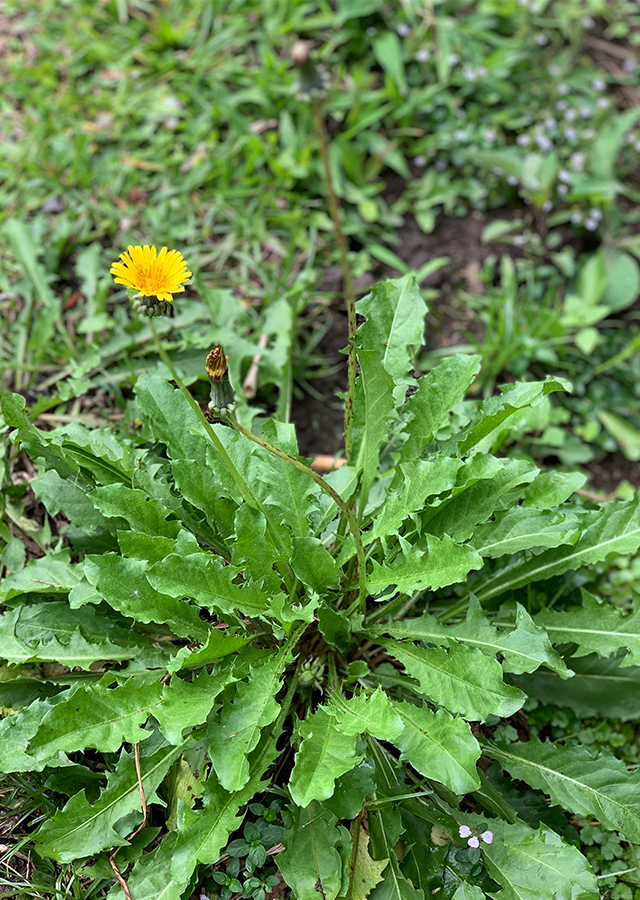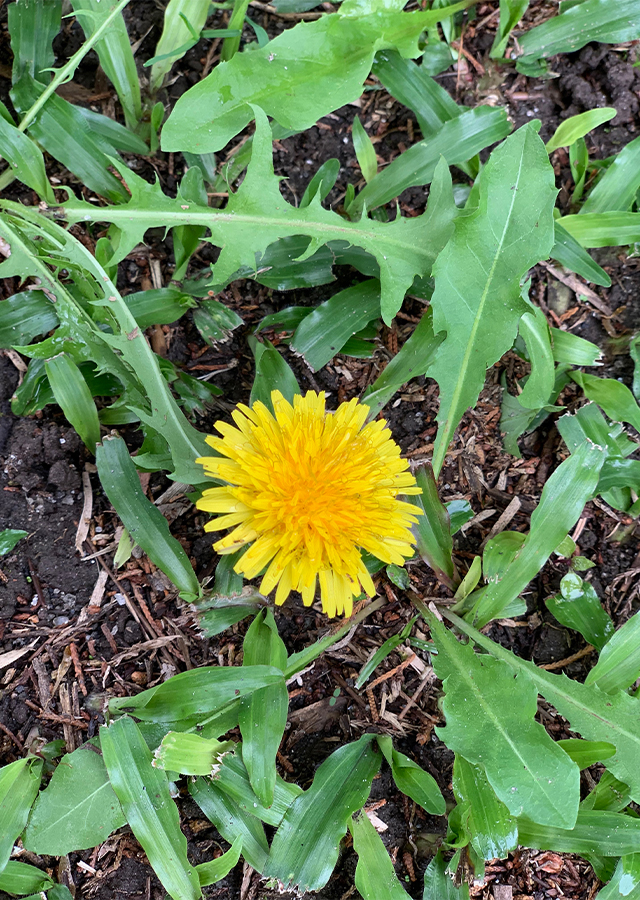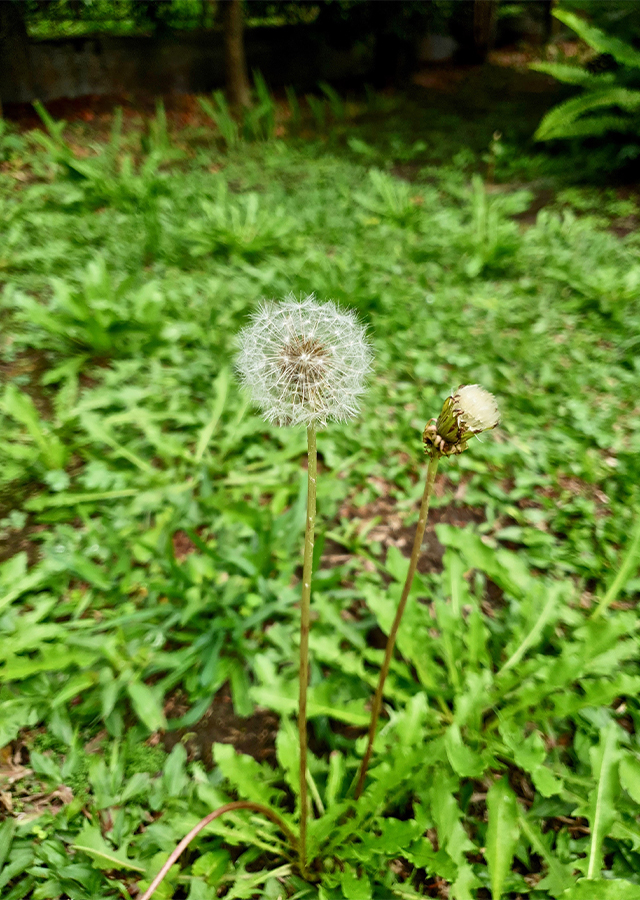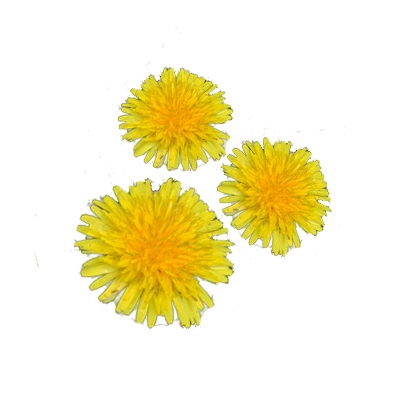Dandelion
Taraxacum officinale F.H.Wigg.
Asteraceae
Location in our garden
Principal



Synonym
Chondrilla taraxacum (L.) Stokes
Crepis taraxacum (L.) Stokes
Leontodon taraxacum L.
Habitus
Herbaceous. A perennial plant that can grow up to 0, 45 m tall.
Part Used
Leaves
Flowers
Roots
Stem
Growing Requirements
Full Sunshine
Need Shade
Habitat
Wetland
Riverbanks
Forest
Coastal
Grassland
Overview
It is native to Europe and continental temperate Asia, but now distributed almost all over the world. It is introduced and naturalized in temperate, boreal and arctic regions throughout Eurasia and North Africa, ranging from subtropical to tundra biomes. It is typically a weed of cultivated ground and anthropogenic grasslands. The name of Taraxacum officinale is used for non specialist taxonomist to called a group of common Dandelion that include agamospermous polyploids microspecies and close related diploids under the section Taraxacum.
Vernacular Names
Taraxaco (Brazil), Huang-hua-tii-ting (Chinese), Gemeine Kuhblume (Germany), Seiyotanpopo (Japanese), Achicoria silvestre (Spanish), Lauhele (USA).
Agroecology
It can tolerate a broad range of climatic conditions. It may grow at sea level or up to an elevation of 6000 m. It is tolerant of a very wide range of conditions, from 90 to 2780 mm annual precipitation and 4.3 to 26.6 °C average annual temperature. It shows a wide range of adaptability to light, being able to grow vigorously in full sunlight. It can grow in a wide range of soils.
Morphology
- Roots - a deep rooting plant, long taproot and latex in all parts, lactiferous, verticalproot, in diameter and grow up to 1-2 m in length.
- Stems - stemless, radial rosette in which every sixth leaf overlaps, highly variable in shape.
- Leaves - simple, opposite, ovate to oblong-ovate, entire or slightly toothed, with acute tips and glandular spots on the lower surface.
- Flowers - all ligulate; corolla yellow, but often with a purple line outside, greenish or yellowish to black, stigmas 2, spreading.
- Fruits - an achene, narrowly obovoid, about 3 mm long, ribbed, greenish to straw-coloured or brownish.
- Seeds - seedling with epigeal germination; cotyledons free, leafy, obspathulate.
Cultivation
By seeds - sow in spring in a cold frame and either surface, sow or only just cover the seed. Germination should take place within 2 weeks.
Chemical Constituents
Flavonoids, inulin, pectin, asparagin, taraxin, taraxerol, stigmasterols, violaxantine, tannins, copper, arnidol, flavoxanthin, β-sitosterol, terpenoids, saponins, caffeic acid, kicorat acid, pollinastol, taraksasterol, ixerin D.
Traditional Medicinal Uses
Medicinal Uses
- Dandelion is especially effective and valuable as a diuretic, depurative, strongly diuretic, antibacterial action, hepatic, laxative, stomachic and tonic.
- The plant is used internally in the treatment of urinary disorders, gallstones, jaundice, cirrhosis, dyspepsia with constipation, oedema associated with high blood pressure and heart weakness, chronic joint and skin complaints, gout, eczema and acne
- The latex has a specific action on inflammations of the gall bladder and is also believed to remove stones in the liver.
Traditional Uses
- In Europe, widely used for gastrointestinal ailments. It is taken as broth with leaves of sorrel and egg yolk for chronic liver congestion.
- Native American Indians have used infusions and decoctions of the root and herb for kidney diseases and heartburn.
- In the Caribbean basin countries, used as antidiabetic.
- Traditional Arabian medicine has used it for liver and spleen diseases.
- Used in Chinese medicine for hepatitis, bronchitis, pneumonia, as a topical compress for mastitis.
- In Udhampur, India, locals cooks the leaves as vegetable especially as pre- and post-pregnancy food for women to overcome weakness.
- The Hutsuls of Bukovina eat fresh flowers to treat cough.
Part Used
Reference Sources
- CABI. (No date). Invasive Species Compendium. Taraxacum officinale complex (dandelion). https://www.cabi.org/isc/datasheet/52773 22-02-2021
- Chuakul, Wongsatit. (2016). Pl@nt Use. Taraxacum officinale. https://uses.plantnet-project.org/en/Taraxacum_officinale_(PROSEA). 20-02-2021.
- Fern, Ken. (2014). Useful Tropical Plants. Taraxacum officinale. http://temperate.theferns.info/plant/Taraxacum+officinale 22-02-2021.
- Stuartxchange. (2020). Philippine Medicinal Plants. Dandelion. http://www.stuartxchange.org/Dandelion.html 22-02-2021
- Kirschner, J. & Štěpánek, J. (2011). Typification of Leontodon taraxacum L. ( ≡ Taraxacum officinale F.H. Wigg.) and the generic name Taraxacum: A review and a new typification proposal. TAXON 60 (1) : 216–220



